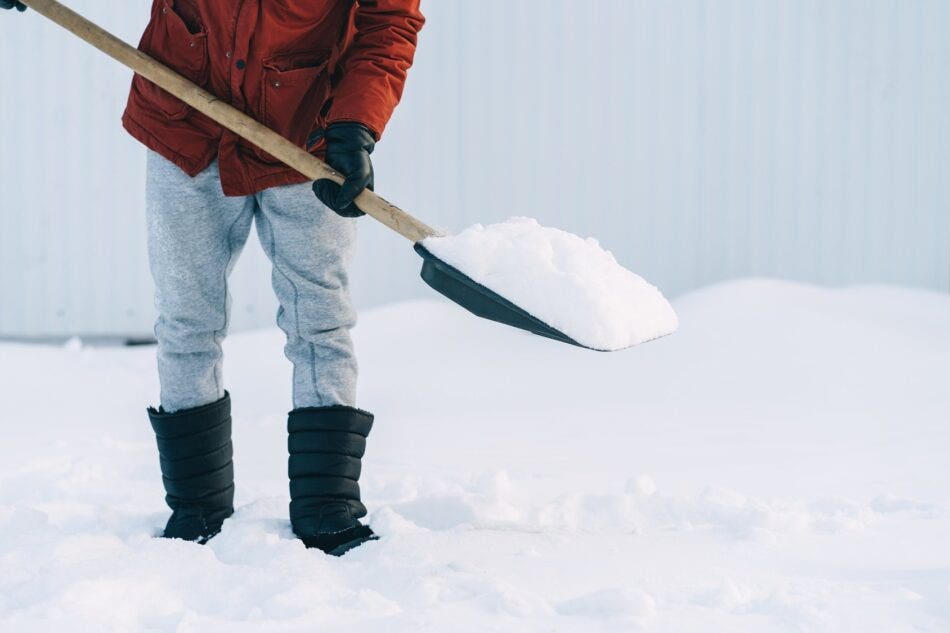Alberta winters are legendary for the wild swings in temperature, windy and warm chinooks, at least one week of head-numbing cold and the occasional big dumps of snow. If you own a home in Alberta, you’re responsible for clearing the property’s sidewalk.
Failing to clear the snow properly can result in fines and even legal action. How? Many municipalities in Alberta have bylaws requiring snow to be cleared within a certain timeframe. If you don’t, you could get a ticket from a bylaw office. Also, if someone slips and falls on your sidewalk because you failed to clear it, they could potentially sue you for damages. We’ll discuss this in more detail below.
You have a legal obligation to clear snow.
You’re required by law to shovel the snow from the sidewalk or pathways around your property after a snowfall. Usually, you have 24 to 48 hours to clear the snow after the snowfall has ended. The exact timeframe depends on the municipality.
These bylaws are put into place by municipalities to ensure residents can get where they need to go safely.
If you don’t clear the snow, you could get a warning notice or, if you’re a repeat offender or another 24 to 48-hour window has passed, you could receive a fine. The municipality may also send someone to clear the snow and invoice you, the property owner, for the work done.
You can be sued if someone gets hurt.
If someone slips and falls on your uncleared sidewalk, they could potentially sue you for damages. They can do this as your negligence resulting in an injury to them, which could be affecting their livelihood.
Your home insurance would likely respond in this scenario, helping to cover your legal expenses and any medical payments or settlements, up to your policy limit. Such a claim would result in higher home insurance rates and may not be enough to cover all of the expenses related to the lawsuit.
What about tenants?
Similar rules apply in relation to rental properties. In commercial or multi-tenanted properties, it is the landlord’s responsibility to ensure that all common areas have adequate snow removal so that the landlord would not be liable for any accidents. In single-family rental properties, the landlord should include snow removal as part of the tenant’s responsibility in the tenancy agreement.
If you’re a landlord, you should either arrange for snow removal or place the responsibility for snow removal in your rental agreement. You should be very specific about when and where the snow needs to be cleared. You should also remind tenants of this responsibility.
Ultimately, the property owner will be held responsible for compliance for snow removal.
What if I can’t shovel snow?
If you’re away or physically unable to shovel snow, you can arrange for snow removal in one of the following ways:
- Pay a snow removal contractor.
- Arrange for a neighbour, friend or family member to clear the snow.
- Request help through a community program such as Snow Angels.
Snow Removal and Your Insurance
In summary, in order to protect yourself you should:
- Know your municipality’s bylaws regarding snow removal.
- Remove snow promptly (or have tenants, contractors, or a helpful volunteer remove it).
- Ensure you have adequate liability coverage with your home insurance if someone were to get hurt and sue you.
In today’s highly litigious society where slip-and-fall lawsuits are very popular and injury claims are very costly it is in your best interest as a homeowner (and/or landlord) to make sure that you do all that is necessary to avoid getting sued.

